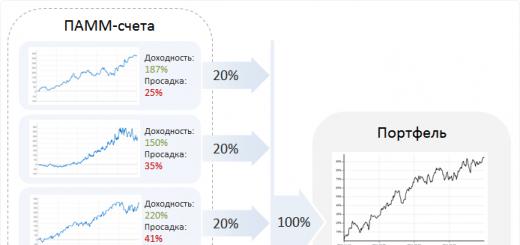Imagine how you wake up, and from the wide open window there is a pleasant smell of freshness. Birds are singing happily in the garden. The trees quietly whisper among themselves, like good old neighbors. And my soul is so cozy and calm that I never want to leave this little oasis of happiness measuring 6 acres.
If we remember the times of the Soviet Union, then a plot of 6 acres was allocated for preferential terms representatives of the dacha cooperative. People of that season approached the land from a more practical point of view: they made vegetable gardens and planted crops. There was no question of houses or gazebos.
In the 21st century, priorities have changed. Preference is given to rest. Despite the size of the plot, people strive to use the land to the maximum. They build houses, erect gardens, plant vegetable gardens, and create recreation areas.
Where does landscaping begin?
First of all, draw a detailed plan of the site on a piece of paper or in a special computer program. With the help of a drawn diagram, you will have a clear idea of what will be located where.
When making your plan, consider the following points:
- Sides of the horizon;
- Shape of the site;
- Construction requirements and standards;
- Location of communications on the site and near it: sewer pipes, water supply;
- Unevenness on the land.
- The area of the house and buildings for household needs.

To avoid problems with neighbors and government services, it is necessary to plan the territory in such a way as not to violate SNiP standards:
- Buildings with wooden roofs should be located at a distance of 8 m from each other.
- The minimum gap between wooden houses is 10 m.
- It is prohibited to locate a toilet closer than 15 m from a country house.
- The shortest distance from the house to the bathhouse is 8 m, and to the shed – 12 m.
- If your layout includes a well, then dig it 20 meters from the toilet.
- A residential building is being built from the neighbors' fence at a distance of 3 m, a garage - 1 m, a barn - 4 m.
- Large trees should be 4 m away from the neighbor’s fence, low trees – 2 m, bushes – 1 m.
Division of land into zones
A plot of 6 acres is important so that it looks beautiful from any side and that not a single piece of land is “walked around”.
Depending on the preferences of the owners, the layout may vary. But in 90% of cases, the territory plan is drawn up taking into account the following zones:
- Bathhouse, barn, toilet, gazebos;
- Garage or parking place;
- Relaxation area;
- Playground for children;
- Garden Garden;
- Flower beds.

It is not necessary to include all of these elements in your planning. Determine for yourself a list of the necessary components of your site, think about their placement.
Location of the house
The territory plan is drawn up based on the location of the country house.
A residential building is built at the highest point of the site in such a way that the living rooms are insolated for at least two hours a day.
Don't forget about the distance of 3 meters from the neighbor's fence. If width land plot allows, then move the house a little further to the side. This way, you will save useful space on which you can plan a lawn, garden or playground.
Garage placement
Considering that people come to their dacha by personal car, a garage is simply necessary. Yours vehicle will be protected from theft and bad weather.
At the same time, it should be planned so that the room has two parking spaces in case guests arrive.
If funds do not allow you to build a garage, then build a canopy from a metal frame and polycarbonate.

As examples from life show, a garage or shed should be built on the side of a residential building, and not inside the yard. Otherwise, you will lose a lot of space needed for the car to pass.
Bathhouse, barn, toilet
It is advisable to carefully plan the location of the shed and other structures. Choose a place for construction so that the buildings do not darken the garden.
It is best to place the toilet behind the barn. In this case, it will not interfere and spoil the landscape design of the courtyard. If you are a rare guest at the dacha, give preference to a dry closet. It does not emit an unpleasant odor and takes up little space.
Placement of buildings depending on the shape of the site
It is often impossible to draw up a plan for a land plot due to its shape:
- Rectangular. This is the best option and there should be no difficulties with zoning. The country house is built approximately in the middle. In the corner there is a place for a barn, a bathhouse, and a vegetable garden is made next to it. A recreation area is organized on the reverse side of the territory.
- Elongated. It is better to plan the location of a residential building on the short side of the fence. Along it you can plant another garden, a vegetable garden and build a barn or bathhouse.
- L-shaped. The protruding area is given over to a recreation area, and a residential building is being erected nearby. Outbuildings are allocated space on the opposite side.

Sometimes people want to save space for a garden bed, garden plot or recreation area. In this case, you should draw up a plan for one building with several floors. The first floor is allocated for the barn and summer kitchen, and the second floor for living rooms.
Relaxation corner
The area where you are going to relax with family or friends must be planned so that the beautiful landscape design is at your fingertips. As they say, it is pleasant for both the body and the eye.
For a quiet family holiday, a gazebo is installed in the back of the garden. A small pond or fountain is made nearby.
For noisy parties, find a place near your home. It will be more convenient for you to serve food and drinks to your guests.
When choosing a place for a barbecue, consider the direction of the wind so that smoke and ashes do not fly towards the neighbor’s property.
Playground
If you have children, this area should definitely be included in the plan. A place for children's games is allocated in the center of the site opposite the window of a residential building, so that there is an opportunity to watch the kids.

Garden plot and vegetable garden
Without a garden and a garden bed, a dacha is not a dacha. To ensure that you get a rich harvest every summer, place the vegetable garden in the southern part of the land. It is better not to create a bed in a low-lying area or near groundwater, otherwise you risk flooding it during the seasonal rains.
The garden bed will not be damaged if you fence it with plastic bottles, slate, brick, stone and other available materials.
Vertical beds look impressive. They also allow you to save space.
You should not plant a vegetable garden if it is located in the southern part of the territory. Otherwise it will create a shadow. It is better to distribute garden trees randomly on free plots of land. Due to this, your oasis will look romantic.
For an area of 600 square meters, it is practical to use columnar varieties. They bear fruit well and require little space.
Paths, flower beds, fence
When drawing up a plan of the territory, do not forget about such details as the fence of the summer cottage, paths and flower beds.
Landscape design is unthinkable without beautiful flowers. They please the eye and lift your spirits. Flowerbeds are made mainly between the facade of the house and the fence on the border with the street. When designing them, do not use strict geometric shapes. This will visually reduce the area.

Sow the free spaces with lawn grass and plant ornamental plants around. This landscape design will expand the space.
When arranging the territory, avoid straight lines. Straight paths bring objects closer, and this makes the area look too small. Therefore, make them arched and winding.
You can't ignore the fence. To prevent the area from appearing cramped, soften the contours with climbing vegetation or opt for hedges.
Planning and landscape design of a garden plot of 6 acres is not an easy task. But a rational approach to business, proper zoning of the territory and measures in everything will allow you to create a cozy nest.
Planning a large plot is sometimes much easier than planning a small one. There may simply not be enough space for your home, garden and vegetable garden. To accommodate and correctly arrange all the necessary buildings and plants in a small area, you need to adhere to special rules. Let's look at them.
Choosing a location for a well
Correctly determining the location for building a well is a primary task, especially if the site has not yet been planned and developed. It is much wiser to first choose the right place for the well and, taking this into account, design the rest of the territory, because the quality and purity of the water completely depend on the location of the well. Therefore, you should pay close attention to this.

To choose the right location, you first need to check where the groundwater lies and determine the presence of rock layers and quicksand on the site (they can complicate the work). Next, it is important to make sure that the water is safe to drink. You cannot build wells near sources of pollution (toilets, parking lots, septic tanks, burial sites).
Selecting a location for a septic tank
In order to correctly place a septic tank on a site, you need to find out in which direction the groundwater is moving. According to SNiP 2.04.03-85, which regulates the construction of external sewer networks, the distance of the septic tank from the house must be at least 5 m. In order not to create problems with neighbors, it should be taken into account that the minimum distance of the septic tank from the fence is 2 m. spoil the quality of water in your well, place the septic tank as far as possible from the source of water intake.

Choosing a place for home and recreation area
The distance of your house from your neighbors' house depends on the materials from which they are built. If this is a house made of stone, concrete or other non-flammable materials, then the distance can be from 6 m. If these are wooden buildings, then the distance should be more than 15 m. Compliance with this point is necessary for fire safety and is regulated by SNiP 30-02-97.

On a plot of 6 acres, the optimal calculation of zones is as follows: buildings - 100 m2, paths and platforms - about 50 m2, vegetable garden - 100 m2, garden - 250 m2, recreation area, lawns - 100 m2.
If a house, barn, garage and other outbuildings are planned on the site, then 100 m2 must be divided between all buildings. Naturally, the house will occupy the largest area.
When choosing a location for a residential building, you should remember that it should not be located near the roadway. It is best to place it deep in the site, or no closer than 5 m from the road.

As for choosing a place to relax, in small areas it is difficult to find a free, spacious place. This does not mean that you need to completely abandon the lounge area. On a plot of 6 acres you can build a small gazebo. However, the best solution would be a cozy outdoor veranda. It will allow you to abandon the gazebo and save a lot of space on the site.
Placement of outbuildings
Greenhouses, toilets, showers and sheds should be located in a place opposite the roadway. At the same time, remember that the toilet should be 12 m away from the house.
Advice: It is best if you place the toilet and shower on the same side as your neighbors. This technique will significantly increase the choice of places to build a well.

According to SNiP 30-02-97, the collection and treatment of shower drains and household water must be carried out in a filter trench, at least 4 m away from the boundaries with neighbors. It is also allowed to discharge water into an external ditch through a special ditch. In this case, for each individual case, coordination with the sanitary and epidemiological authorities is required.
The garage should not be built in the depths of the site, because the entrance to it will take up a lot of space. At the same time, there is no need to save space on the width of the entrance and main paths.
Placement of garden and vegetable garden
On a plot of 6 acres, the optimal area for a vegetable garden will be 100 m2, for a garden 200-250 m2.
Do not save space between the fruit trees; it should be about 3 m. It is advisable to locate the garden on the south side of the house. In this case, the building will become a good protection for trees from cold winds.

Shrubs (raspberries, rose hips) are best planted along the fence, this will save space and decorate the perimeter of the site.
To maximize the use of space in a small area, some plant beds can be placed under trees. Vegetable plants require much less light than garden plants, so you can choose a place for them where there will be sunlight for only half a day. Plant legumes, cucumbers and other climbing plants in round beds with a frame inside. Plants will entwine it and take up minimal space.

For a plot of 6 acres, it is undesirable to build a large compost pit; you can get by with a small plastic tank.
Mistakes when planning small areas
When planning small areas, it is very important to place everything as compactly as possible and at the same time not overload the area. Let's look at the most popular mistakes that interfere with the rational use of space.
1. Overload. Don’t try to squeeze everything into a small area: trees, a pond, fountains, a bathhouse, a greenhouse, etc. Decide and select the objects that you really need.

2. Chaotic. In small areas the importance of order is even greater. To do this, you need to carefully and accurately plan the areas of the site and the location of each object on it.
3. High fence. If possible, build a fence that looks lightweight and will make the space appear larger.
4. A pile of garden figurines and architectural decorations. In a small area, the accumulation of these objects looks ridiculous and creates the impression of cramped space.

5. Reducing the distances between plants. Do not try to get more yield by planting plants densely. After a while they will begin to oppress each other due to lack of sun and space.
6. Mixing styles. Maintaining style in a small area is very important. The variegated design of different zones of the site will “steal” the space and make it even smaller. Strict compliance with the design in a single style, on the contrary, combines all parts into one and makes the site beautiful.
Design techniques for small areas
To make your small area look harmonious and spacious, there are several design techniques. Let's look at them.
1. Hide the corners, or rather, use them. In each corner, place some element, for example, a bench, a small podium, a flower bed. The main thing is that this place has some useful or aesthetic function, since empty corners limit space.

2. Create relief. Creating even a small difference in the area will greatly help change its appearance.
3. Block your view. Install small garden partitions, screens, arches. This will prevent you from seeing the entire area, and accordingly, will help to visually enlarge the space. Winding paths will also be useful.

4. Round the shape of your site. Any element clearly defined by corners looks smaller, so try to give rounded shapes to the objects on your site: garden, lawns, gazebos.
It can be made comfortable and beautiful using the simplest rules accepted in landscape design.
Unusual, memorable buildings and compositions will add uniqueness and charm to the site, you just need to show a little artistic taste and work with your hands.
Let's consider design options for various corners of a summer cottage plot of 6 acres. High-quality photos will give you a sea of creative ideas. It is especially valuable that all the accessories for decorating a dacha that will be discussed can be made with your own hands from available materials.
Principles of landscape design
The design of a summer cottage site should begin with careful planning, which takes into account the purpose of the territory. On six acres it will not be possible to breed farm animals, beekeeping or poultry farming. Regular appointment small dacha– a place of relaxation in the lap of nature and a source of fresh seasonal vegetables.
First, priority objects are put on paper: a house, a barbecue place or grill area, a utility yard, a well or well, places for beds and fruit trees. Then they think about the location of paths, lamps, and small decorative compositions.
Rules for registering a plot of 6 acres:
- Do not use massive structures. A gazebo, veranda, terrace, fence, attic (if there is one) should look light.
- Do not put a solid fence around the perimeter - while you are at the dacha, you will be haunted by the feeling that you are in a cage. A translucent fence expands the boundaries of a small area and makes it optically larger.
- You cannot plant vegetation that will eventually reach gigantic proportions. Low-growing trees are planted in the garden, arranging them in compact groups. With this planting, they will not only be a source of fruit, but also elements of landscape design.
Fences, hedges and enclosures - how to make them beautiful?
- a key question when designing a dacha. Acquaintance with the site begins with the fence. By it, passers-by will judge the dacha as a whole and the owners themselves. Beautiful, neat, made with creativity and “zest” - such a fence characterizes the owners of the site from the best side.
Country fences are built from plastic and brick. When designing a fence, you need to adhere to the style in which the entire site is decorated. The design should unobtrusively fit into the design of the dacha and the surrounding landscape.
Metal welded and forged fences look solid. Forging is expensive, but the result is always excellent - an openwork, but very strong and durable design. It can become the calling card of your dacha.

If you need to give a forged fence more solidity or reduce visibility, the supporting pillars and lower parts of the spans are laid out of brick or wild stone. The downside of this option is a significant increase in cost, since you will need to build a foundation and hire masons.

Working with wood does not require special equipment or special skills. Wood is easy to process, so a wooden fence can be given the most amazing look.

Standard wooden fences are inexpensive and quick to install. But if you need exclusivity, you will have to forget about the banal picket fence. Instead, it is better to install a stylish wicker fence, which will give the dacha a rustic flavor.

The simplicity of the village town is apparent. Weaving such a fence is not easy, so most summer residents simply buy ready-made spans, then fixing them in the right place. Those who want to make a wicker fence with their own hands will have to stock up on a huge amount of branches, flexible trunks and a good guide to weaving wood.
You can enclose the entire plot around the perimeter with tyn or fence off flower beds and front gardens. A wicker fence is well suited for demarcating two adjacent areas because, due to its low height, it does not shade the neighbors’ land.

Instead of branches, you can use any sufficiently flexible lumber to make tyn. If it is leveled and well processed, the fence will turn out to be extremely elegant.

How to design a flower bed or flower garden?
In a small area there is not always room for a full-fledged flower garden. Many owners of six acres have to be content with a small flowerbed. In this case, it is better to place it in the most visible place: under the window, near the porch, at the entrance to the site.
Low along the central path instantly creates a festive mood. Unlike geometrically correct borders and borders, which are usually used to decorate paths, mixborders have irregular shapes.
They can contain any plants - from ground cover to shrubs. In the photo below, the mixborder is made up of decorative cabbage, which harmonizes well with the deliberately rough paving of the path.

Path design
When thinking about the appearance of the paths, you need to take into account that they must be comfortable. Usually the central path is made so wide that a garden wheelbarrow and other equipment can pass along it. The paths can be made narrower - about 60 cm wide.
Material No. 1 for – concrete. To make the path look unusual, the hardening cement mortar can be given the appearance of wild stone.

Partially poured concrete paths look interesting. The missed areas will soon be overgrown with grass. Such paths are incredibly cozy.

Brick paving is one of the most durable. Brick-lined paths give the feel of antiquity. They are especially beautiful against the backdrop of bright greenery. For perfect color harmony on a site with red brick paths, the fence, facade and gazebo should be white.

Wooden paths are the cheapest and fastest way to arrange an area. To decorate a Japanese-style garden, you can paint the wood red and place a landscape accessory with hieroglyphs next to the path. Being in this part of the garden, it is not difficult to imagine that you are right in the Land of the Rising Sun.

Decoration of outbuildings
Outbuildings influence perception no less than a house or a fence. Therefore, sheds, toilets and even a water barrel should look appropriate.
It is most convenient to hide the ugly walls of a summer kitchen under vertical gardening. To do this, weaving plants are planted nearby: a rose garden of rambler roses, ivy.

Old boards and bricks can be painted with multi-colored paints to make them an interesting backdrop for a plant arrangement. The photo shows how the dark vertical surface emphasizes the brightness of the tall flowers planted along the perimeter of the building.

– the most intimate building on the site. But it can also be designed extremely attractively. For example, decorate the walls with hanging flower pots and antique accessories.

If you may never look into the gazebo during the entire season, then the washbasin and restroom are a place that receives increased attention from owners and guests. To design it, you shouldn’t skimp on inventions and materials. Those with boundless imagination and skillful hands, as usual, win. It will not be difficult for them to give the garden bathroom the appearance of a medieval carriage.

Installed in household or recreational area- depending on whether it will be used for burning garden waste or as a place of rest.
The place for the fire is laid out with any heat-resistant material: brick, natural stone, concrete blocks. On sale you can find portable fire pits for the garden made of metal, cast iron or ceramics. This is an ideal option for a small cottage. Portable fire pits do not take up much space and can be easily transported to any corner of the garden.

Small pond - relaxation area
Small ponds are now in great fashion. A mini-pond decorates the site and gives the design individuality.
An artificial pond with a modest design made of untreated sandstone slabs looks good if complemented by lush coastal vegetation. In the photo this is also the yaskolka.

Modest in size with a plastic or concrete bottom, it is almost completely hidden by lush aquatic vegetation. Garden sculptures depicting fairy-tale characters and fountains can be installed on the shore of a reservoir or directly in it. They make this area of the garden very attractive for children, so the pond should not be deep.










On the shore of the pond, paved with artificial marble slabs, it is comfortable to relax, contemplating the unique beauty of aquatic plants spreading their leaves on the mirror surface.
 You just need to sit down in the shade on a comfortable bench. A wooden bridge gives this area of the garden an oriental flavor.
You just need to sit down in the shade on a comfortable bench. A wooden bridge gives this area of the garden an oriental flavor.
The fence, bench and bridge are made in the same design and create a seamless composition.
It goes well with the lush, colorful ground vegetation characteristic of the Chinese style of landscape design. It is better to hide the plastic sides of a frame swimming pool behind masonry.
She gives hydraulic structure view of a medieval oriental fountain. The Mediterranean plants surrounding the pond - oleander, myrtle, boxwood - make the similarity even more complete.

If the dacha is well equipped, it will become the best vacation spot for children. This will allow the whole family, including its younger generation, to have a good break from the bustle and noise of the city, enjoying a weekend in the lap of nature.
The main requirement for the design of a playground is safety. All its elements are made from non-traumatic materials. It is best to use well-cleaned and sanded wood for construction of the site. Instead of a synthetic spring coating, you can use pieces of elastic bark, spread in a layer of 10-20 cm.

Marine motifs were used to decorate this one. The awning over the head, protecting children from the sun's rays, is made of dense multi-colored canvas. A sandbox-ship, in which you can not only build a sand castle, but also stand at the helm like a captain, or fish with a bamboo fishing rod, will delight the boys.

The parents' task is to make a sandbox. The kids will figure out how to play it themselves. The simplest design that does not require large expenses is to make a side out of concrete, in which large multi-colored smooth pebbles were used as filler.

If the weather permits, the playground can be used for overnight stays. Of course, if there is such a cozy house on it, almost like a real one. This wooden structure combines a gym, a slide, a playhouse and a sandbox.

How to decorate a gazebo at your dacha?
The purpose is to provide the family with the opportunity to gather for communication and meals in the open air, in a place protected from rain and other weather disasters. Very often, summer residents spend most of the day in the gazebo, entering the house only to spend the night. Typically, a gazebo is the most stylish element in the landscape of a site.
The open version of the gazebo is a regular canopy attached to support posts. This design is simple and at the same time beautiful.

Closed gazebos look like small houses. Those sitting in them are reliably protected from gusts of wind by the walls.
A closed gazebo makes the space more enclosed, so for small plots of 5-6 acres it is better to use the open option - it visually expands the territory.

Easiest to build. This is an environmentally friendly material and is easy to process. Polycarbonate can be used to make the roof.
The most budget-friendly recreation area is a structure made of fabric stretched over a prefabricated metal frame. It is better to complement such a gazebo with a mosquito net so that you can relax in it in the evenings.

How to use stumps and snags?
 Compositions made from roots or rutaria are an independent trend in landscape design that replaced Japanese stone gardens. Rutarium means "root".
Compositions made from roots or rutaria are an independent trend in landscape design that replaced Japanese stone gardens. Rutarium means "root".
An ordinary snag or rotten stump is already the simplest rutarium. After a little modification it will turn into a flowerbed or flowerpot.
The simplest option is to make a mini-flower bed out of driftwood, after painting it with varnish or paint.
Nutritious soil is poured into the center of the tree trunk and unpretentious long-flowering plants are planted, for example. Low flowers, in this case salvia, are placed along the perimeter of the driftwood.

A cut down tree can be turned into cute garden furniture. But the easiest way is to use them as beautiful flower beds, especially since in a small area you may not find another place for flowers.
Another way to decorate the garden is to arm yourself with a chisel and make fancy park figures , with which you can interestingly decorate your beds.

Lighting equipment
Has not only functional purpose. Lamps and lanterns installed in the right places allow you to highlight the most beautiful compositions and create accents in the design. Well-chosen lighting demonstrates the good taste of the owners and their wealth.
Electrical flood light devices are used on lawns and flower beds. Their spectral composition is important. It should match the color of the plants in the flowerbed.
To enhance the brightness of certain plants, lamps of a similar spectrum are inserted into the lamps:
- mercury lamps enhance blue and blue shades;
- Sodium lamps bring out the brightness of red plants.

An important lighting design technique is illumination of paths. In small individual areas, paths are decorated with columnar lamps. The smaller the area, the smaller the electrical appliances should be.

Lamps along the paths can simultaneously be used to illuminate flower beds, as is done in the photo below. Miniature lanterns not only emphasize the beauty of the path paved with glossy stone, but also make it possible to admire the lush balsam trees even in the dark.

Landscape gardening and landscape construction is a very large area of phytodesign that requires serious theoretical and practical training. Regardless of the size of the plot, in order for the future result to be worthy and long-term, it is necessary to apply a professional approach to design. Even when creating a landscape design of 6 acres, you will need to be patient, initially paying enough attention to the theory.
Project
It is important not to neglect creating a detailed project on paper; this will help you not to lose sight of various subtleties, take into account all the pitfalls, and also really assess your capabilities, both physical and financial.
The garden plot project will contain the following sections:
- Initial site plan;
- Zoning;
- Design.
If necessary also:
- Drainage system;
- Irrigation scheme;
- Electrical network diagram.
The initial or draft site plan is needed to create all other plans. It should display the cardinal directions, landscape features (lowlands, hills, plantings of large plants), buildings on the territory of the dacha, as well as near borders, adjacent areas or roads.
The second stage of design is zoning. Here you need to think about what functional areas will be (recreation area, vegetable garden, sports, utility, children's area). When assessing the real possibilities of a small summer cottage, it is better to limit yourself to 3-4 zones, determining their acceptable sizes.
Garden Garden
Traditionally, in our country, land plots are used for growing vegetable crops. The main advice from professionals is that you do not need to maintain this tradition with absolute precision. A vegetable garden can also be beautiful, and not look like a cemetery with rectangular graves.
Combining vegetables and flowers
To diversify the design of your summer cottage, you need to add colors in the form of flowers that harmoniously combine with fruit-bearing plants. Flowers can be used as perennials or annuals.
Availability
When creating a landscape design, you need to provide access to all elements of the garden, so that there is no difficulty in caring for them.
Fruit trees and shrubs
For a summer cottage plot of 6 acres, it would be rational to select low-growing trees and shrubs, alternating them with medium-sized fruit-bearing bushes.
Shady part of the garden
When creating the design of a summer cottage with your own hands, you need to take into account all the little things.
One of these tricky moments can be considered filling the shady part of the garden. Often, inexperienced gardeners, due to their inexperience, leave this area under thickets of weeds; it’s not a big deal if it’s an inconspicuous area behind the house, but it’s much more difficult for those who have it as the front area of their house.
Relaxation garden
In recent years, it has become fashionable to purchase summer cottages not to get involved in gardening, but simply for cultural recreation in the fresh air. As a rule, for this purpose it does not make sense to acquire large territories; a plot of 6 acres with a small amount will be quite enough country house with a well-equipped seating area.
Flowerbeds
The most common element of landscape design is the flower bed.
There are rectangular flower beds, called ridges, and free-form flower beds. There are also single-level and multi-level flower beds.
Annual flower beds
When creating your own landscape design, you can start with flower beds with annual crops. Among them there is a large selection of unpretentious plants on which you can practice and gain experience in floriculture.
Individual landscape
Most areas are characterized by a monotonous landscape that has no individual characteristics. To prevent the view from being boring, you need to create elements that imitate natural elements of the landscape (hills, lowlands, different levels).
Harmony in the garden
It is quite possible to create a harmonious landscape design with your own hands.
To do this, individual elements must be selected in the same style, combined with buildings and the natural features of the site.
In conclusion, we can say that creating a landscape design for a summer cottage with your own hands is very exciting; skills can be improved every year, bringing them to the ideal. By expanding your knowledge in the field of individual topics covered in this article, without being afraid to experiment, you can develop your own individual style.
A serious question about how to plan a plot of 6 acres arises not only among beginning gardeners, but also among those owners of haciendas who have decided to completely change the appearance of their property. This is explained simply - if you are lucky enough to have a place where you can escape from the noisy and stuffy city at least for the weekend, it is not at all necessary to use it exclusively for growing organic vegetables, berries and fruits. It would be a good idea to arrange one or even several areas for complete relaxation.
Landscape design is the whole art of designing certain areas of the territory. There are several schemes that professional designers prefer to work with. When planning independently, you can also use one of the ready-made designs, taking it entirely as a basis, or use only individual elements from it that are suitable for a specific site.
Whatever plan is chosen, the most important criterion for the residents of the house will be maximum ease of use of all the facilities provided for comfortable rest and work.
Typical site planning projects
Landscape designers have developed six basic schemes for planning a suburban area, which professionals usually rely on when carrying out work, certainly enriching these templates with their own ideas.
- Rectangular layout
This type of territory planning can be called the most popular, since basically all summer cottages have a rectangular or square shape. And it should be noted that they are also the most comfortable for arrangement.
It is convenient to draw a diagram of the distribution of objects on a sheet of paper lined in a square (or on “graph paper”), and when drawing it, it is necessary to set in advance and maintain a certain scale, for example, 1:100.
Defining different zones in a territory with right angles is much easier to do than creating complex, intricate diagrams that add chaos to the overall appearance of the site. It is easier to make a rectangular plot more open by placing on it various residential and outbuildings, ponds, beds, alpine hills, fruit trees and shrubs in the correct order. In addition, with this approach it is easier to plan the various communications necessary to ensure a comfortable stay on the site.
- Diagonal layout
Diagonal planning can be done on a rectangular, square, or irregularly shaped area. The defining elements of such zoning are the paths dividing the site, which are laid diagonally, from corner to corner. Sometimes designers, when drawing up a diagram, prefer to completely move away from horizontal and vertical lines, even planning to place the house diagonally on the site.
 The main “reference lines” are diagonally drawn tracks
The main “reference lines” are diagonally drawn tracks This method of placing objects will visually expand the space and make the area more spacious. In addition, there is the possibility of original distribution of zones. With this approach, many more of them can be identified, since the constructed paths will connect the corners of the territory, which quite often remain completely unused.
Diagonal planning is usually used if it is planned to complete the entire design of the site in a certain style.
- Irregular planning
Irregular scheduling includes various ways organization of zones. Elements of rectangular, diagonal and curvilinear layout can be used here, but they must be mutually placed so that they are in harmony with each other.

On the presented plan, which was drawn up for a specific site, you can clearly see all the zones of the territory planned by the designer:
1 – Entry zone, naturally located in the front part of the site, facing the road. Here a covered parking lot can be arranged for a car or a full-fledged garage can be built.
2 – The entrance area is a continuation of the entrance area. A path leading to the house is arranged on it, and it is most often decorated with flower beds.
3 – The recreation area is almost always located in the depths of the site, but not far from the residential building. In this area they organize a children's playground, a swimming pool, a gazebo, and install swings or garden benches for relaxation. Fruit or ornamental trees can also be planted here.
4 – The utility zone is most often located in the far corner of the site. The necessary outbuildings are being erected there, and a sanitary area is being installed - a summer shower and toilet.
5 – The vegetable garden in this diagram is located in the corner part of the territory. If this zone is organized in this way, then the fencing of the site in this place should not be continuous, since usually garden crops need natural ventilation, otherwise a lack of sun and an excess of moisture can lead to rotting of vegetables right in the beds.
6 – Alpine slide. Usually it is also included in the recreation area, but is located somewhat separately, since it can become a corner of solitude, sometimes so necessary for communicating with nature.
7 – Garden area. Decorative and fruit trees and shrubs are planted here, and this area of the dacha can also be used for recreation.
Irregular site planning can be applied to areas of any geometric shape. When distributing zones, you do not have to adhere to any strict rules for the location of objects not connected by communications, which is why this type of planning is quite popular among land owners.
- Curvilinear planning
Curvilinear planning can be called spontaneous, since the paths on the site are laid along convenient well-trodden routes. Therefore, in landscape design this type of zone distribution is called natural or natural.
 Emphasized smoothness of lines is the basic principle of curvilinear planning
Emphasized smoothness of lines is the basic principle of curvilinear planning In this option for arranging the site, there are no straight or sharp corners, and all paths have smooth, almost imperceptible turns, so the area looks aesthetically pleasing and elegant. Various shrubs are planted along the paths passing through the area, flower beds are created, which will need to be carefully monitored throughout the summer, otherwise they will quietly begin to take over the path area.
- Tangents and arcs in layout
The use of tangents and arcs in site planning can be applied to a site of any shape. This distribution of zones makes the territory more dynamic, where shapes and turns, replacing each other, have rounded corners, which is very comfortable for leisurely walks.

This type of site arrangement can be used for any architectural style of the house. In the presented diagram you can clearly see all the objects located on the site.
- Radial layout
A radial or circular planning scheme is distinguished by the fact that all the objects of the site are located in a circle or semicircle, which fit into a certain zone of the territory. In order to emphasize the unusual shape of the arrangement of elements on a rectangular plot, its corners are planted with shrubs or fruit trees.
In this case, when drawing up a project, in addition to a square grid, a compass is also used to draw a circle inscribed in a square or rectangular shape of the site and divided in the form of rays. Decorative landscape elements and main structures are located along these radially diverging rays.
A house in such a layout can be located in the central part of the circle or on one of the rays, but in order for the dynamics to be maintained, the building will have to fit harmoniously into this form. If a residential building has already been erected on the site, then planning can be done around it or on one of its sides.

In the example project, a radial layout is used, inscribed in a square area:
1 – The residential building is located on the arc of the central circle.
2 – . A path leads to it, which is part of a circle located near the house.
3 – Garage. This building is located at the entrance to the territory, and its own semicircle is organized around it.
4 – Small secluded gazebo.
5 – Greenhouse located in the corner of the plot.
6 – The vegetable garden, located next to the greenhouse, has beds in the form of rays.
7 – Fruit trees are planted in this case along the edge of the plot.
8 – A children’s playground is installed next to the house, so it is clearly visible from its window, and the children will be under the control of adults.
9 – Rockery - a flowerbed with various plants well matched to each other, and additionally decorated with stones.
10 – Ornamental trees or shrubs. They can be selected in such a way that flowering will continue from early spring to late autumn.
11 – Paths that are located in circles.
12 – Entrance area, which can be used as a parking lot.
Criteria for determining the main purpose of the site
To apply one or another basic planning scheme, you need to decide in advance what the area around the house will be intended for:
- It will only be a place of relaxation, a vegetable garden, a garden or a complex divided into different zones.
- Will there be one of the types of artificial reservoirs located on the site - a pond, decorative waterfall, pool or fountain?
- Do you need a children's playground and what will be on it?
- Will a zone be organized?
- Which outbuildings are expected to be built on the site.
- The number of flower beds and their varieties.
- Do you need parking or a garage for a car at your dacha?
- Where will the sanitary zone be located - on the site or in the house itself.
After a clear answer to the above questions, the owner of the site will probably have the first outlines of a plan.
What needs to be taken into account in the project?
In order for the planning to be successful, the basis of the drawing must be taken from the site plan attached to the cadastral passport, which must be transferred to graph paper on a scale of 100:1, that is, 1 m of the site per 1 cm of the diagram. In the case when the house has already been erected, it is immediately drawn on the diagram, and other buildings, objects and landscape design elements begin to be “placed” around it.
Plumbing and artificial reservoirs
The plan for laying out water supply pipes must be drawn up as rationally as possible, since the created network must cover all areas where water is required - this is, first of all, a residential building, then a bathhouse, a swimming pool, a garage, a barbecue area, a garden and a vegetable garden.
- It is advisable to deepen the pipes into the ground by 500÷700 mm. If the pipeline is planned to be lightweight and will run on the ground, then it will have to be dismantled annually for the winter period and installed in place in the spring.
 It often makes sense to limit yourself to light “summer” water supply
It often makes sense to limit yourself to light “summer” water supply - If the country house is planned to be used only in the summer, you can use ordinary reinforced hoses, polyethylene or polypropylene pipes, which are installed only for this time and are supplied to the required areas.
How to install a water supply system in a country house
This largely depends on the type of main water source. Read more about how you can in a separate publication on our portal.
- Next, the water supply is sent to the area where the bathhouse will be built, and a shower and toilet will be installed. Even if you plan to make a bathroom in the house, it is recommended to have a toilet on the site so that you don’t drag dirt into the house while working in the garden. It is best to install these objects in the far corner of the site.
A toilet and shower are usually installed in the complex, and sometimes a utility block is attached to them. Thus, you can save not only on materials, but also on the organization of sewerage.
 Complete solution - toilet, outdoor shower and utility room
Complete solution - toilet, outdoor shower and utility room Usually this zone is closed from prying eyes by tall shrubs or planted with evergreens such as pyramidal thuja, boxwood and others.
- Naturally, it is necessary to provide vegetable beds, berry bushes and fruit trees with high-quality watering. To do this, it is recommended to connect the water supply to the garden and vegetable area.
- If a swimming pool or pond is planned to be installed on the site, then a pipeline must also be laid to them, but not only for water supply, but also for sewerage. These reservoirs require periodic flushing and water changes.
It is also necessary to take into account the fact that a pool or pond is installed in different places, but for one or for another body of water, an important condition will be the absence of tall trees nearby.
The pool is usually located in an open sunny area near the house. It is desirable that it is clearly visible from the window, especially if the family has small children.

It is recommended to place the pond away from the house among low bushes that can shade the surface of the water, since ultraviolet rays will promote its flowering, and it will have to be changed frequently or a complex cleaning system must be provided.

This pond should not be located close to the house because in the evening many different insects gather in the grass near the water and will fly towards the light from the windows and into the house.
Artificial pond - decoration of a suburban area
It is quite possible to build such an original element of landscape design on your own. Read more about this in a special publication on the portal.
Sewerage
There is no way to do without a sewerage system or collection of household waste on a summer cottage, especially if the house is used for living all year round. In order not to have problems with regulatory organizations, it is necessary, in accordance with existing sanitary standards, to correctly locate and equip a septic tank or isolated cesspool. At the same time, they adhere to certain rules established by SNiP and SanPiN.

- Sewage pipes must be located at a distance of at least 10 m from the water main. If possible, the treatment or storage facility on the terrain of the site should be located below the water intake, so that in the event of a breakthrough, sewerage does not enter clean water.
- The septic tank must be located at least 5 m away from the foundation of the house - this will eliminate the risk of washing away the walls of the building in emergency situations, and will also eliminate the unpleasant odor in the house. However, you also need to know that you shouldn’t move the septic tank too far from the house, as this will cause internal blockages. If you still have to equip it at a more distant distance, then it is necessary to provide an inspection well every 15 m.
- The septic tank must be located at least 5 meters from a busy road.
- The septic tank is located from the fence between the sections at a distance of at least 2 m.
- The distance from fruit trees or bushes should be at least 3 m.
- The distance from a river or stream is 10 m, from a standing body of water - at least 30 m.
- The access to the inspection hatch of the septic tank must be free, since it will have to be periodically cleaned of accumulated sediments using sewage disposal equipment.
Based on the above, we can conclude that the sewer system and the location of the septic tank must be planned immediately when building a house before dividing the site into zones.
Sewerage in a country house is a serious issue
In order not to have problems with regulatory organizations, with the sanitary-epidemiological or environmental service, and with neighbors in the area, special attention will have to be paid to the issues - the details are set out in the corresponding article on the portal.
And another publication will help with solutions that optimally meet the specific conditions of living in a country house.
Basic elements of site arrangement and landscape design
- At the entrance to the site, parking for a car is often provided, with or without a canopy. If you are setting up not so much a summer cottage as a house for a long-term or permanent residence, then it would be more advisable to think about a permanent garage.

Sometimes a garage is also installed under the house, but this can only be foreseen at the stage of drawing up a project for a residential building, even before the foundation is built.
- Recently, more and more often, barbecue stoves are being installed in summer cottages, in their recreation areas. The convenience of this area is that it can serve as a gazebo and summer kitchen, allowing you to spend more time outdoors. Such zones are set up close to the house, but at the same time, not too close to it, so that during cooking, smoke does not enter the open windows of living quarters.
 Great place to relax - barbecue area
Great place to relax - barbecue area The stove itself cannot be installed under the canopy of trees, otherwise the hot air emanating from the pipe will dry out the leaves on the branches, after which the tree may die, and the leaves may easily ignite from a spark.
BBQ prices
- If you decide to install a gazebo instead of a barbecue area, it is usually placed near the house. The pleasant shade that will be created in it thanks to the dense greenery will provide an opportunity to relax in coolness and freshness on hot days. In addition, in such a place it is good to spend not only days, but also quiet evenings with a cup of tea and a pleasant conversation.
The variety of gazebos is extremely large, so it is possible to choose one that is suitable both in size and design, so that it fits harmoniously into the created landscape of the site.
- If there are children in the family, then you cannot do without a playground in the local area. It can be made stationary, but there is another solution. For example, the modern assortment of specialized stores includes original inflatable complexes, including slides, trampolines, pools, as well as other elements interesting for children.
 A good solution - a safe inflatable playground
A good solution - a safe inflatable playground The convenience of such towns is that they are stable, but light in weight, and they can be moved to a shady or, conversely, sunny place. In addition, for the winter they are easy to assemble, pack and do not take up much space in the pantry.
- If there is a plot of land, then few people will resist planting at least a small amount of herbs or vegetables in the beds. And in fact, you shouldn’t bring tomatoes or beets grown in Turkish greenhouses to your own dacha when you have the opportunity to get an environmentally friendly product from your own garden bed. To get a decent harvest, you need to choose the right place to arrange the beds. An open space on the south side of the house, where there is sun most of the day, is ideal for this.

Fruit trees and shrubs are usually planted along the fence - this way they will not block the natural light of the beds. Tall trees are often planted near the walls of a house to create dense shade and keep rooms cool on hot days.
- Many summer residents dream of receiving fresh vegetables already in the first month of summer, and for this they must install a greenhouse or hotbed. It is not at all necessary to build a large structure - it is often enough to allocate only two or three square meters of area for this. In early spring, seedlings grown in advance on the windowsill are planted under the film.

It is worth equipping the greenhouse in such a way that the film or transparent walls on it can be removed, periodically giving access to the greenery to fresh air and sunlight. When the weather is warm, such a greenhouse can easily be turned into a regular bed by removing the cover completely.
You can approach the construction of a greenhouse or hothouse creatively
Greenhouses and greenhouses can have very original designs, and a variety of, sometimes even unexpected, materials are used for their construction. If you want to get more information on this, take a look at the portal’s publication devoted specifically to these issues.
- Quite often, if you have a plot of land, you have a desire to start raising poultry, and it should be noted that this is quite possible to implement even on six acres by installing a compact and quite aesthetic chicken coop.

It is best to install this object at the end of the site, away from the residential building, so that the unpleasant odor does not enter the rooms through windows open in the summer.
Chicken coop prices
chicken coop
A chicken coop can fit perfectly into the overall style of the site
How to do it correctly, and what sizes and proportions should be followed - all this can be found out from a special publication on our portal.
- The Alpine slide has become one of the favorite elements of landscape design among owners of private houses. It can be located in a fairly large space or compactly occupy a small corner.

There are many different types of alpine slides, and choosing one of them to decorate a small corner will not be difficult. In fact, this decorative object is a kind of flower bed, raised above the main space of the site and decorated with plants that can grow on slopes among stones, as well as large and small boulders and pebbles.
To create an alpine slide, you can use the soil left after digging a pit for one of the buildings. To raise a hill, it is not necessary to use fertile soil - it will be enough to lay it only as a top layer, the thickness of which is determined by the depth of the root system of the plants chosen for planting. Matched stones are placed around evergreen shrubs and decorative perennial grass. An alpine slide can be installed near a pond or in front of the windows of a house, so that you can admire the flowering plants and their harmonious arrangement on the slope of this artificial elevation.
- Upon completion of site planning, all objects on it are connected by paths, which can be laid from various materials. The paving should be laid out in a place prepared in advance for it.

To form paths, fine crushed stone, slabs of different sizes and shapes, round timber sawn from tree trunks and other, sometimes completely unexpected materials are used.
Paths in the country - room for creativity
Creative owners should not have problems creating convenient and beautiful paths on their territory. How to rationally arrange them, and what can be used to cover them - all this is described in detail in a separate publication on the portal.
- After distributing the paths throughout the territory, you can think about their design. The best option, which will emphasize the direction of the paths and become a wonderful decoration of the entire site, is to arrange flower beds.
Flowerbeds can be of different shapes and sizes - specialists involved in landscape design have special templates for their arrangement. If there are no flower beds on the site, then it looks boring and uninteresting, so you should not give up this decorative element, although it will cause quite a lot of trouble, as it requires constant care. And it is best to make flower beds from different varieties of plants, which will replace each other with flowering, starting from the warm spring months and ending in late autumn.
In addition to laying out flower beds, free areas of the site are often decorated with various decorative items that can be made independently - you just need to use your imagination and make some effort.
Video: basic rules for placing objects on a suburban area
Procedure for drawing up a plan
Now, having information about all the main functional and decorative structures and elements that can be located on the territory of a suburban area, in summing up it is necessary to consider the general sequence of drawing up the plan:

- The first step is always choosing a place to build a house.
- If you plan to install a bathroom in the house, then, when determining the location of the building, you immediately calculate the area where the septic tank will be installed and the sewer pipes coming from the house will be laid.
- Next, it is planned to build a parking lot or garage.
- If necessary, the location of the summer toilet and shower is outlined, which, in order to save space and money on building materials, can be combined into a complex and installed in the far corner of the site.
- After this, you need to determine a place for the vegetable garden and garden plantings.
- Places are allocated for recreation areas - a playground, barbecue, gazebo, etc.
- When these objects requiring communications are distributed, the layout of stationary or summer water supply pipes must be indicated on the plan. At the same time, the issue of laying power cables, if necessary, is being considered.
- The next stage is planning specific landscape design objects - a pond and an alpine slide.
- After that, you can think about the remaining elements of the landscape design.
- Now you can unite all the objects with paths along which you can place flower beds or flower borders.
It may be necessary to draw several site plans so that each stage of the arrangement (for example, laying communications) is visible as clearly as possible. Therefore, separate schemes will be required, but they all must be fully consistent with each other.
Drawing up a plan for placing everything necessary on a garden plot is a creative process that requires imagination, the use of your own developments and ideas within the framework of existing standards related to fire safety and environmental safety. Of course, you can entrust site planning to specialists who know their business and do it professionally, but this will be quite expensive. And, frankly speaking, no one other than the owners will be able to better provide for all their own needs and wishes aimed at maximizing the comfort of living in their possessions.
Video: several examples of successful planning of a suburban area










